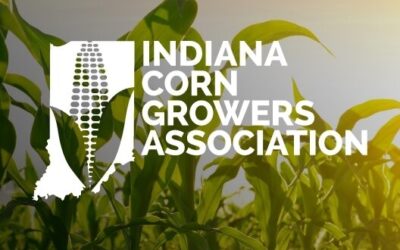Aquaculture and livestock projects build the global market for U.S. soybean meal
By Tom D’Alfanso
Director of Animal and Aquaculture, U.S. Soybean Export Council

As U.S. soybean crushing capacity grows, more sustainable soybean meal will be available for animal and aquaculture feed.
In 2023, three crush plants expanded operations and a new plant opened in North Dakota. Plans are underway for 12 new soybean crushing plants and five expansions to be operating by 2026, including small increases in Indiana.
The U.S. Soybean Export Council (USSEC) is sharing the advantages of U.S. soybean meal and the logistics infrastructure to help customers around the world capitalize on its increasing availability and support global food security.
U.S. soybean meal offers significant nutritional benefits. USSEC is showing worldwide feed formulators that the value of U.S. soybean meal goes beyond crude protein. Its high digestibility and essential amino acids support the health and growth of livestock and aquaculture. Plus, U.S. Soy products have a lower carbon footprint than soy of other origins.
Showcasing advantages for European customers
In Europe, USSEC programs and events focus on helping soybean meal customers understand quality, differentiate between soy origins, maximize value and benefit from the sustainability advantages of U.S. soybean meal. Soybean meal from Indiana and neighboring states can reach Europe through ports on the Gulf of Mexico and along the East Coast.
USSEC has used a variety of educational opportunities to highlight the value and benefits of U.S. soybean meal throughout Europe. These include:
- At the Hellenic Centre for Marine Research in Greece, USSEC implemented an evaluation of replacing fishmeal with sustainable fermented soybean meal in European seabass fed high-performing diets.
- USSEC organized “Soy Quality and Sustainability – Training in Soy Ingredients, Microscopy and Animal Nutrition” at the Norwegian University of Life Sciences, an exchange with the goal to build knowledge of the role of U.S. Soy’s quality and sustainability.
- In conjunction with Bunge Romania, USSEC offered “Back to Basics in Sustainable Soybean and Soy Ingredients,” an interdisciplinary approach to preserve quality and improve sustainability in oil extraction, feed manufacturing and animal nutrition.
- USSEC enabled participation in applied feed manufacturing and animal nutrition training at Universidad Politécnica in Madrid, Spain, which included an interdisciplinary approach to understand the role and impact of U.S. Soy on profitability and sustainability.
- U.S. Soy customers participated in the Turkey Science and Production Conference in the U.K. in March, which included “Improving Sustainable Poultry Production Performance through High Quality U.S. Soy Ingredients.”
Importers have told USSEC they are pleased with the quality of the soybean meal they are receiving from the United States. For example, in one shipment to Poland, the specifications of the commodity soybean meal delivered were slightly better than what was outlined in the purchasing contract.
European markets have opportunity for growth. For instance, USSEC participated in the 2024 Global Seafood Expo in Barcelona, Spain. The total volume of fish and shellfish produced in aquaculture in Europe is predicted to rise by 56 percent from 2010 to 2030, while the value is expected to increase by $3.4 billion. This is expected to lead to an additional total feed requirement of 395,000 metric tons.
Pacific Northwest expands soybean meal shipments
To demonstrate the sustainable production and efficient supply systems for U.S. soybean meal from the Pacific Northwest to Asia, USSEC has hosted multiple trade teams and events.

In 2023, leadership of the Korean Feed Association and member feed mills visited the U.S. In January 2024, USSEC hosted the Korea Soybean Meal Buyers Team, including purchasing managers from 14 feed mills.
Both groups visited the Port of Grays Harbor in Washington state, where an expansion is equipping the facility to export more soybean meal from the U.S. Northern Plains and Midwest. The groups also met with export partners and others to better understand the U.S. soybean meal supply chain. While soybean meal crushed in Indiana likely won’t take this route, this export option is bringing value back to Indiana farmers through overall exports.
Taking advantage of the increased export availability of U.S. soybean meal, USSEC continues to promote U.S. soybean meal in Asia. Programs scheduled in the coming year include the U.S. Soybean Meal Master Program, conference and trade missions. These efforts have potential to increase the market for U.S. soybean meal in this region.
In Korea alone, customers are showing an increased interest in U.S. soybean meal with their purchases during the last marketing year, which was followed up with slightly higher volume in the first half of the current marketing year. That is evidence we are building that market.
In addition to educating customers on the latest innovations and advances in soybean meal quality control and shipping logistics, these USSEC efforts contribute to building U.S. Soy preference for the benefit of international customers. As a result, the global market for U.S. soybean meal is expected to grow alongside U.S. crush capacity and biofuel demand.
Posted: July 20, 2024
Category: Indiana Corn and Soybean Post - July 2024, ISA, News




